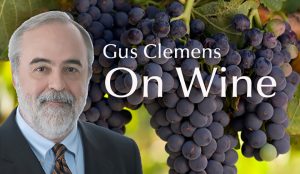After last week’s introduction, more about wine aging.
Most wines today are meant to be drunk upon release and will lose value over time. Many excellent bottles are made to be consumed relatively young.
There are some wines that will improve with age—Bordeaux; sauternes; sweet, acidic rieslings; nebbiolo; aglianico; Chianti Classico; Vino Nobile di Montepulciano DOCG; Brunello di Montalcino DOCG; Spanish Rioja, and some others. Note that only the top end of these efforts qualify for aging.

Quality Porto, sauternes, and Madeira wines can age for decades, even centuries.
Some elements of wine do not change with age: acidity, alcohol, and sugar, although their relative strength may seem to increase as tannins diminish. These elements help wine age more slowly, with only tannins decreasing as they bond together and form sediment. Tannins, however, are essential preservatives in the beginning of the aging process.
Your personal tastes should determine if you age wine. If you enjoy wines with plenty of primary flavors—vivid fruit and freshness—go with young wines. Such wines are the most popular because of taste and because you can drink them the day you purchase.
If you enjoy smoother wines with more subdued dried fruit flavors, less tannins, more subtle aroma, go with aged wines. Don’t be surprised if you discover you enjoy the younger wines more.
The main drawbacks of older wines are money, storage, and patience. Wines intended for aging usually cost more because you are buying quality. They also can cost more if the winery or the merchant did the cellaring. Proper storage is essential. If you don’t have proper storage, even wines built for aging will deteriorate. Patience is an obvious issue. Are you truly willing to spend significant money on a wine and a wine cellar or wine refrigerator, then wait a decade or more before tasting the wine? Few people are willing or able. Fortunately, there is a host of superb young wines to enjoy.
Tasting notes:
• Francis Coppola Diamond Collection Ivory Label Cabernet Sauvignon 2014: Simple easy drinker at a fair price. $14 Link to my review
• Château de Berne Emotion Côtes de Provence 2017: Lovely textbook expression of Provence rosé in a striking bottle—Provence is famous for rosé wines and distinctive bottles. $16-18 Link to my review
• Conde de Velázquez Capa Premium Blend Aconcagua Valley, Chile 2014: Another quality wine from rising Chilean star. Powerful without being brutish or overwhelming, a nice trick. $53 Link to my review
Last round: I’ve got 99 problems and wine solves 98 of them. I will tackle the last one myself.
